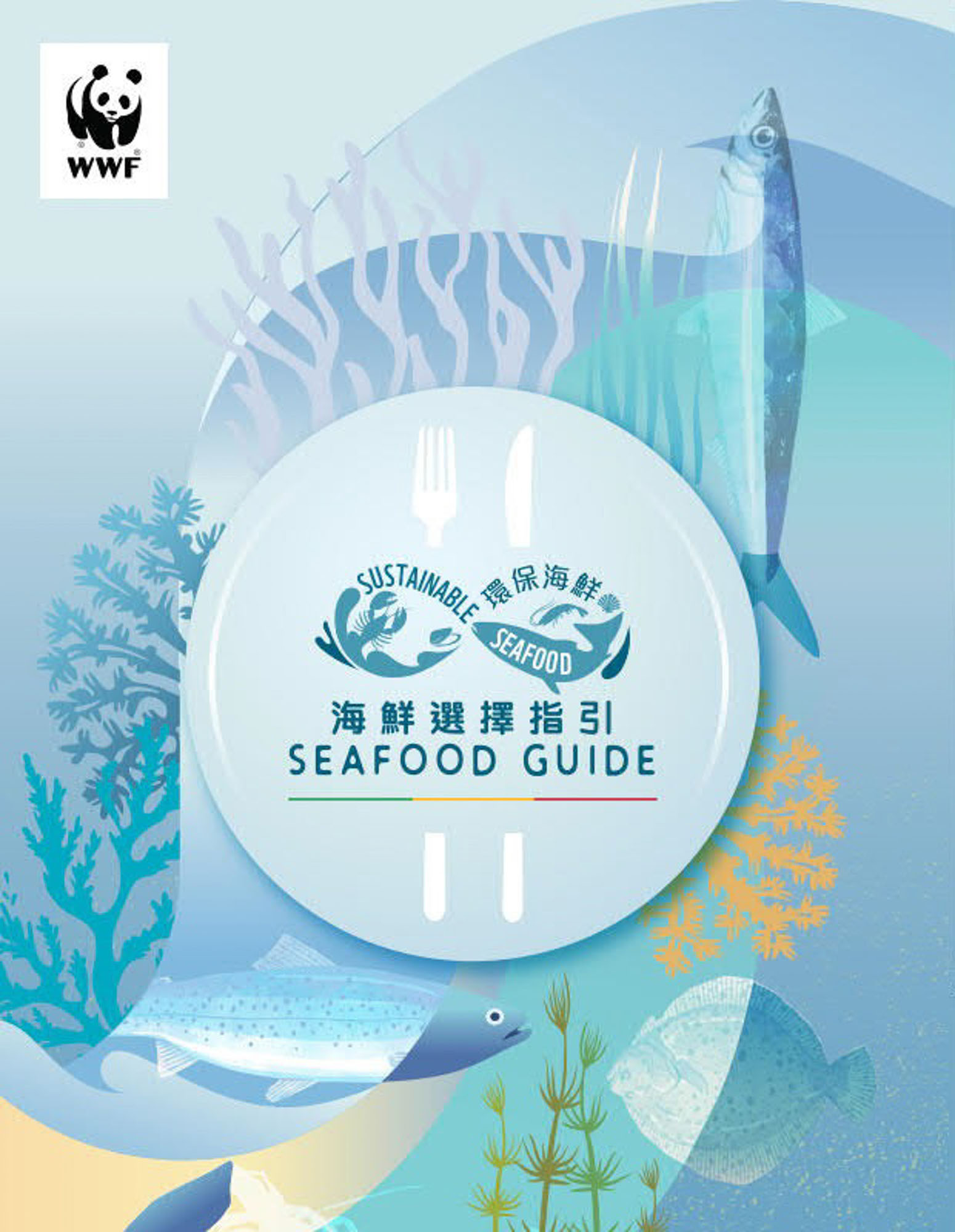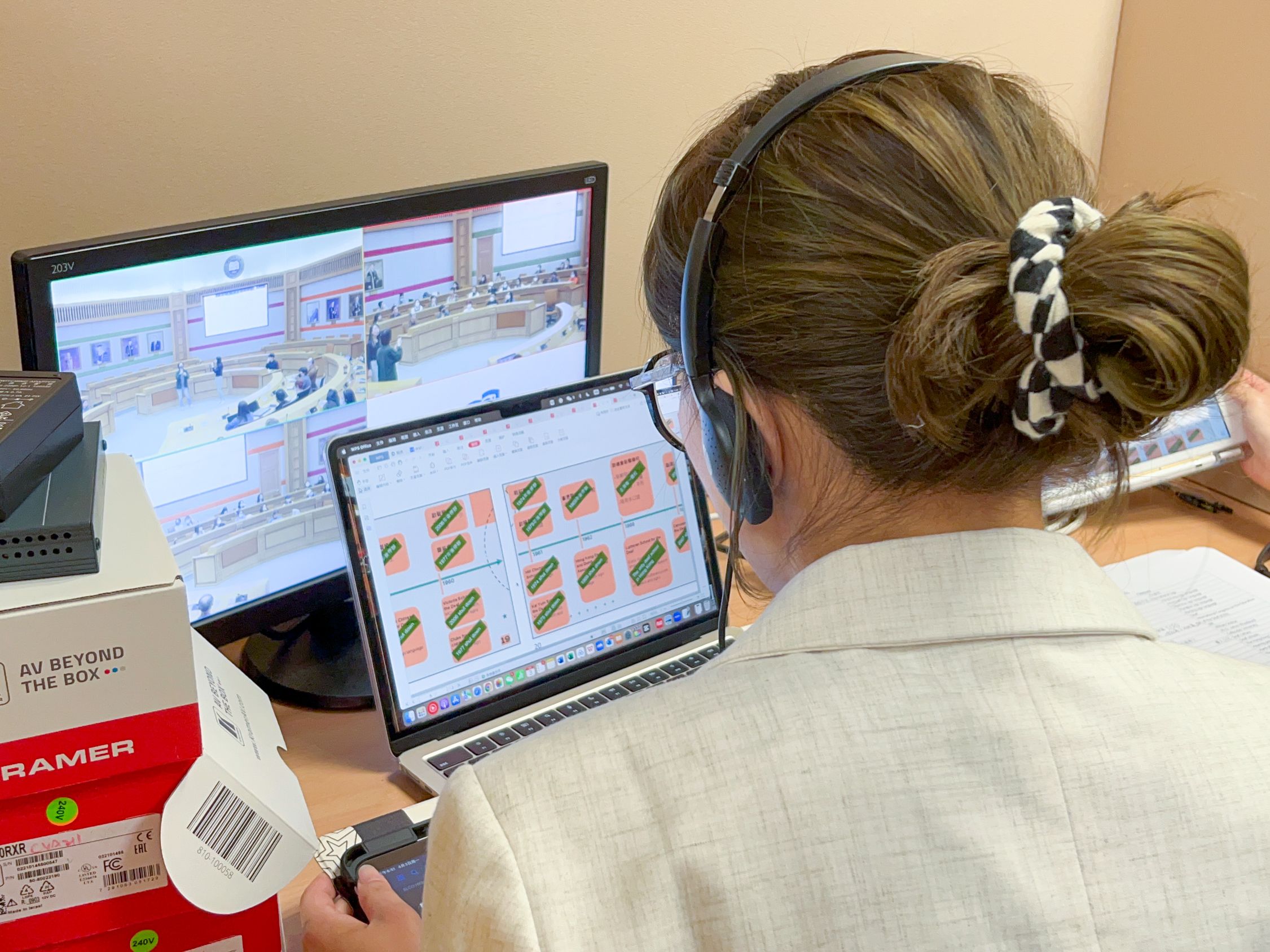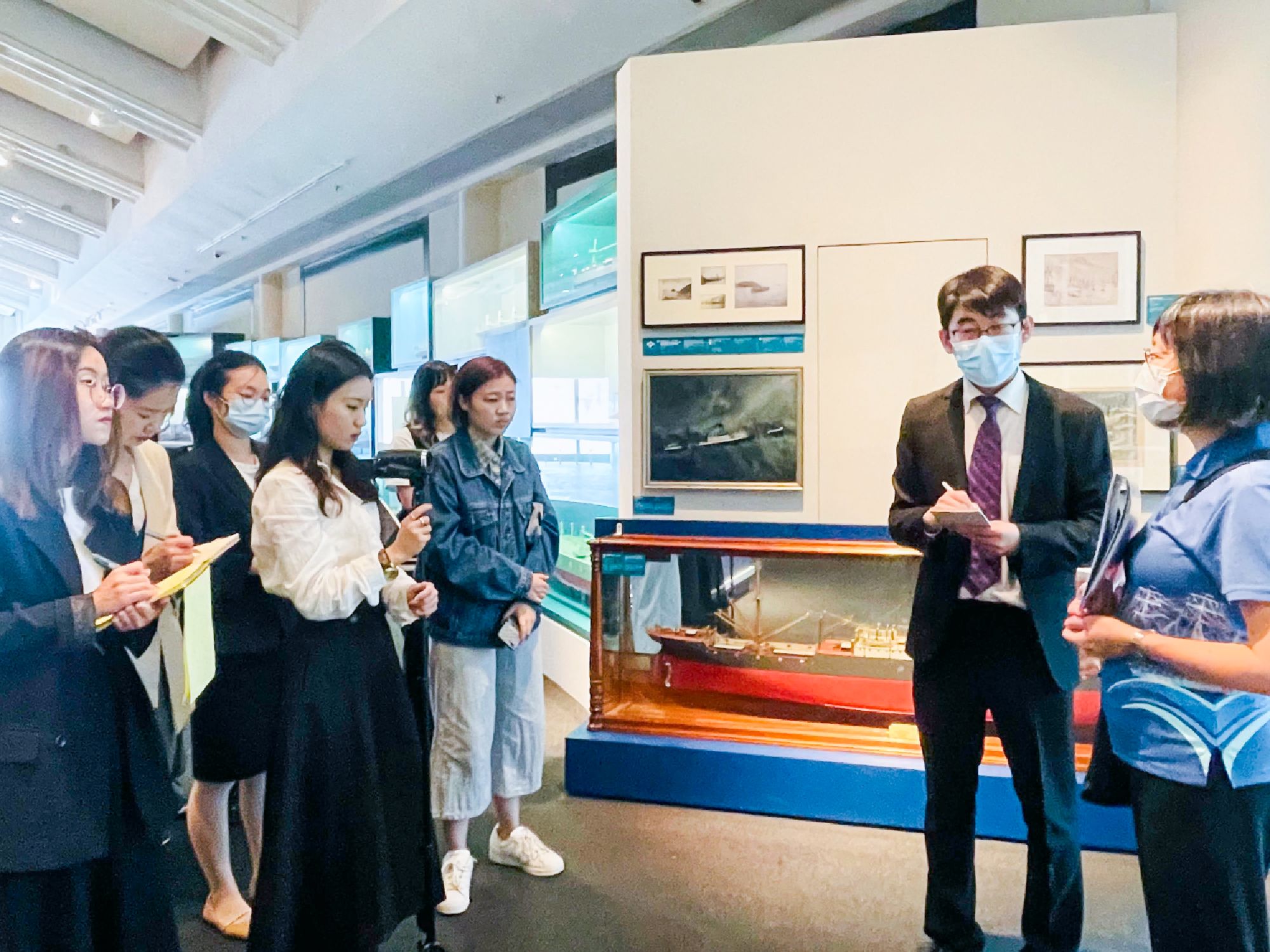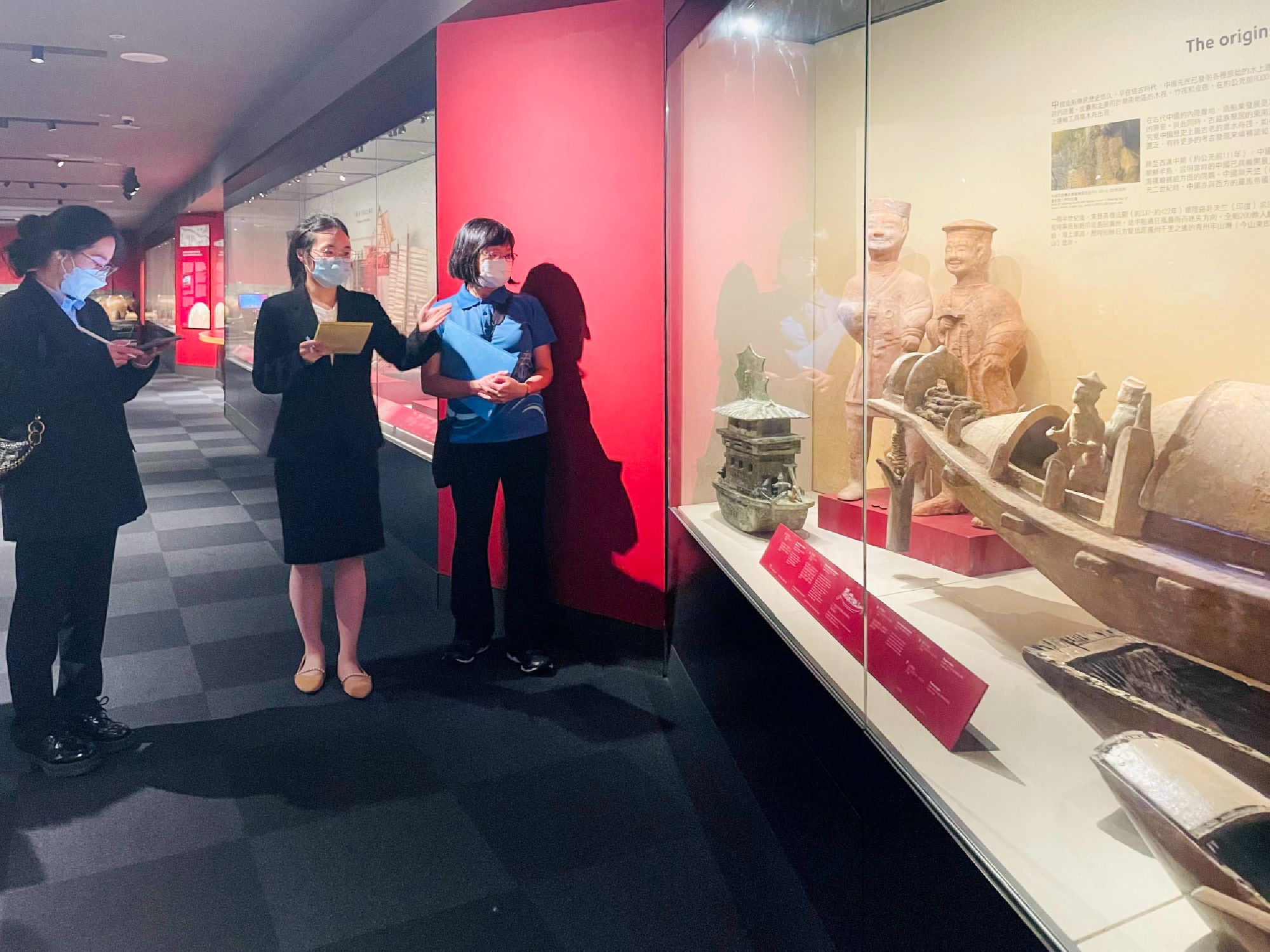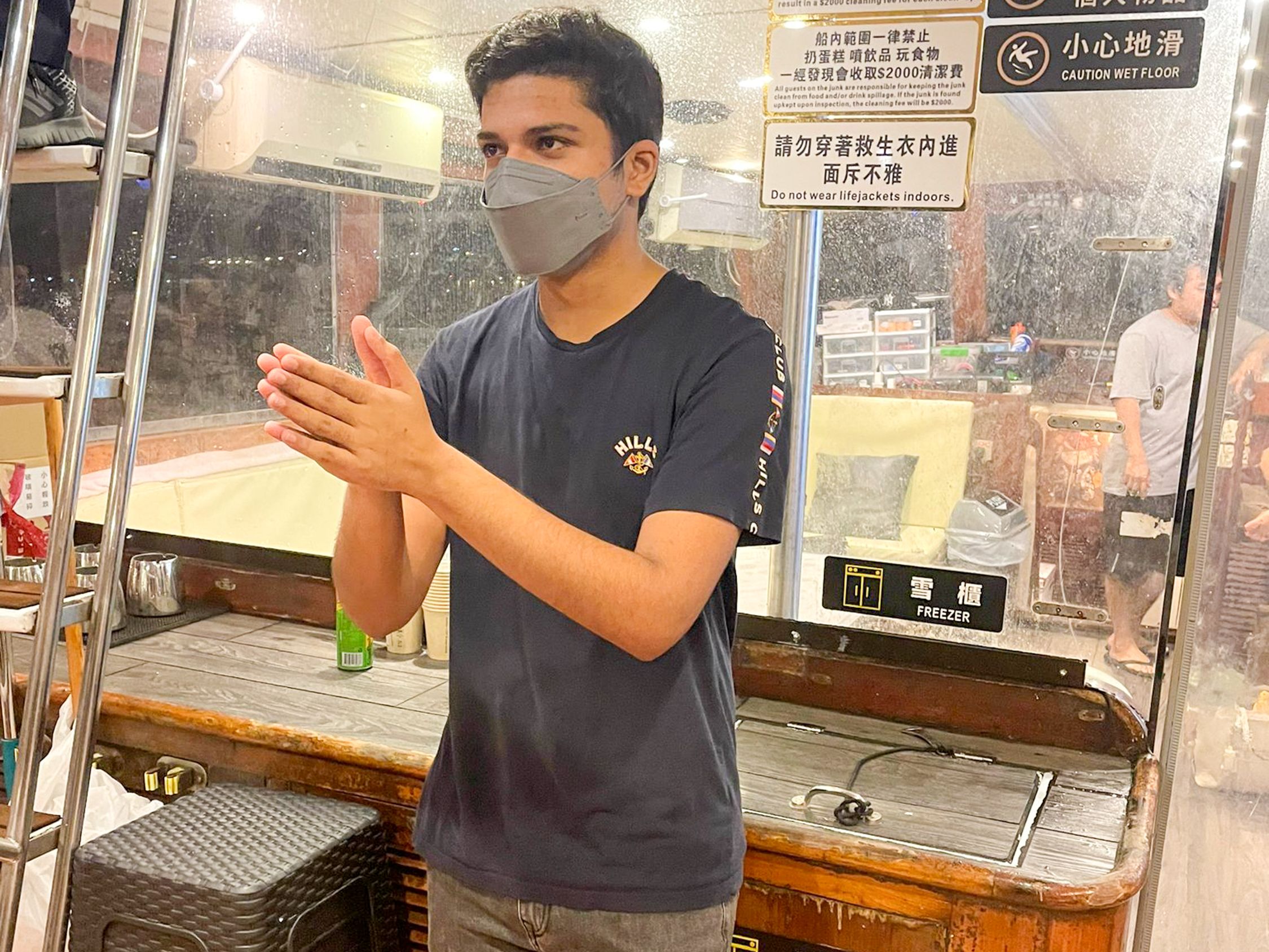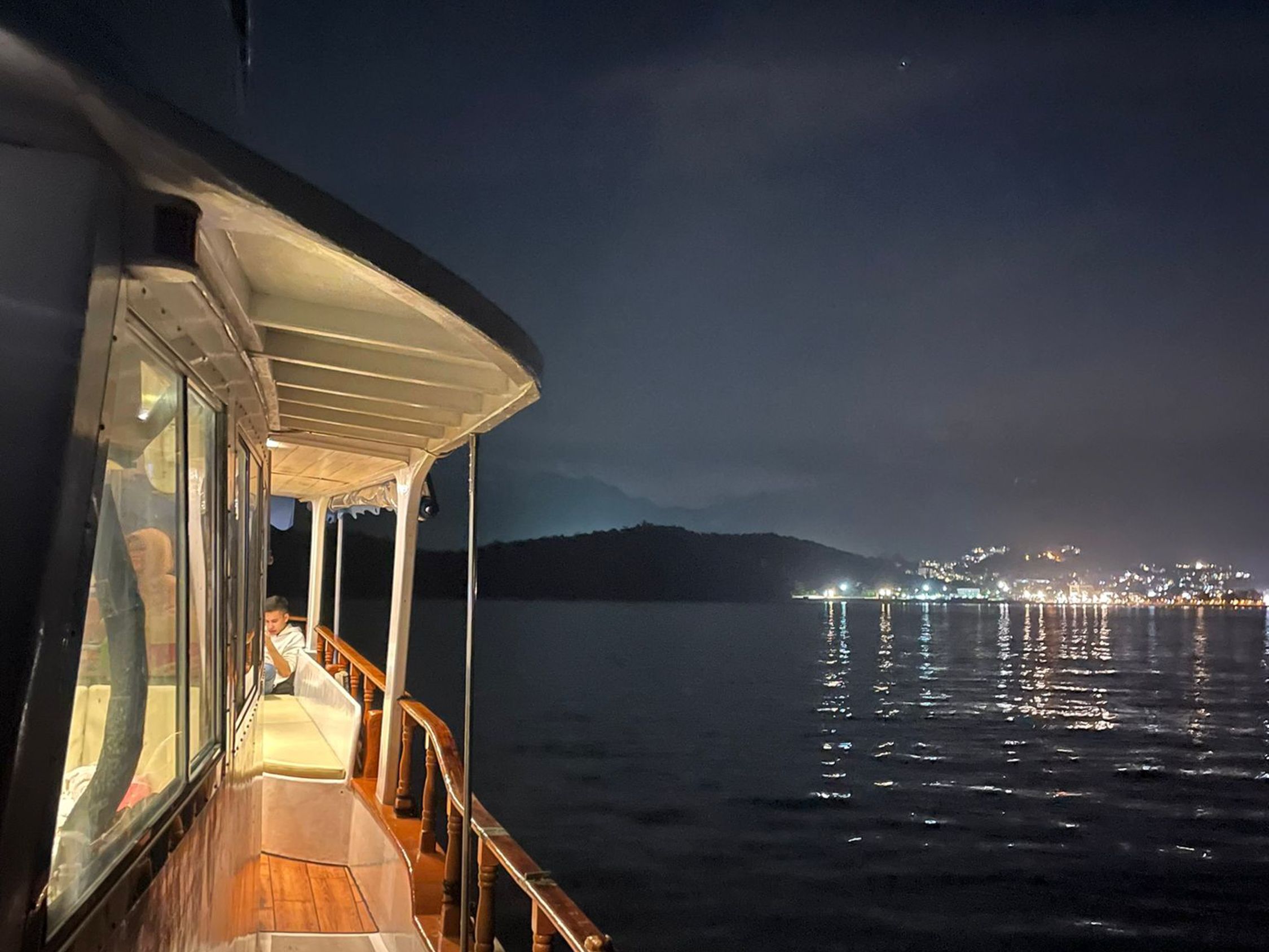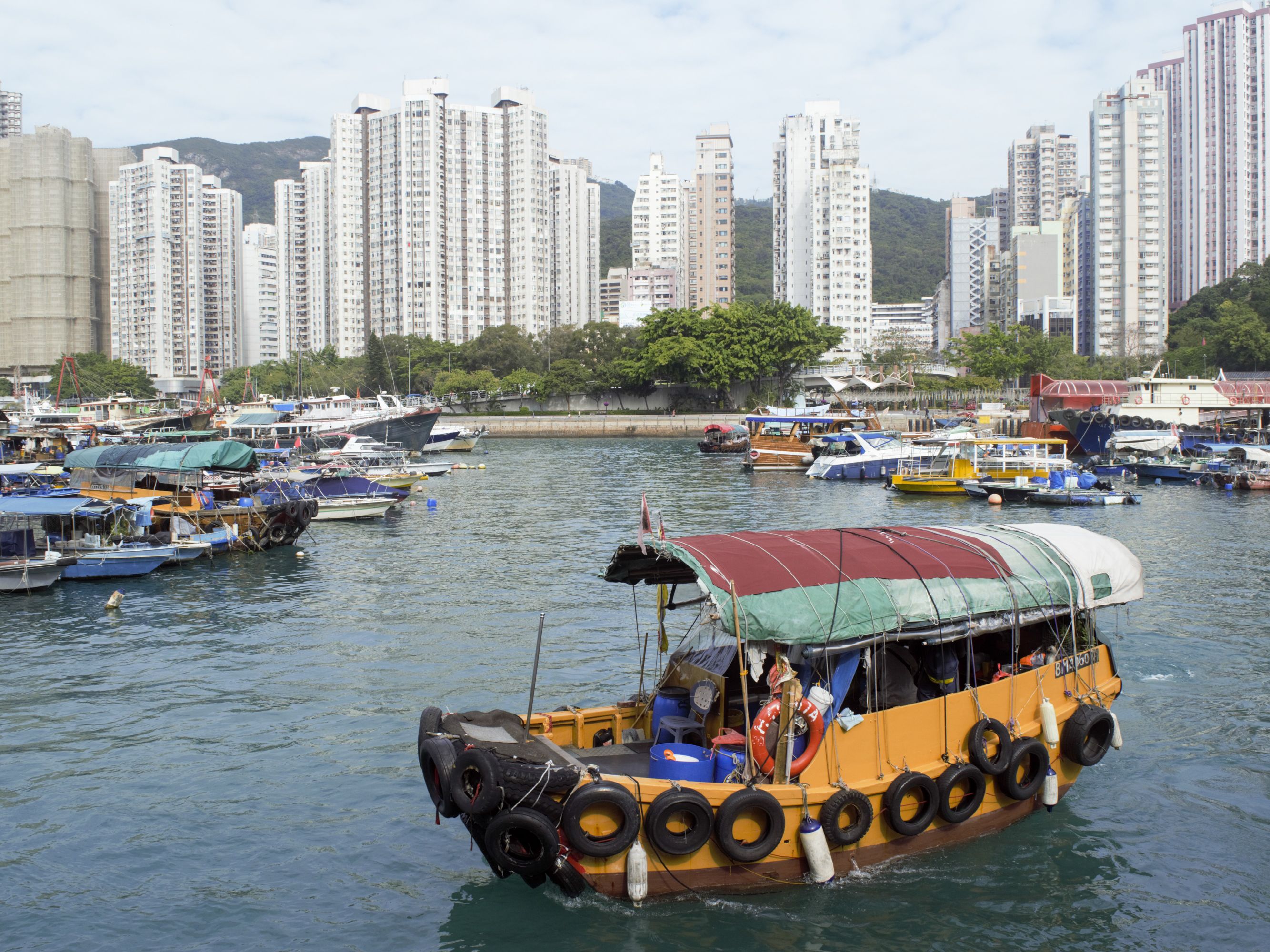SDG 14: Life Below Water
Raising awareness of marine resources through interpreting
In two service-learning courses led by Dr Zhou Nan of the Department of Translation, Interpreting and Intercultural Studies, undergraduate and postgraduate students collaborated to offer language interpretation services. They partnered with organisations including the Hong Kong Maritime Museum, Blue House, HK News-Expo, and the Sign Language Workshop to provide guided tours for community partners and public events. By working with organisations like the Hong Kong Maritime Museum, students gained a deeper understanding of various aspects of marine resources firsthand. They also raised awareness and educated the public about marine resources through the guided tours.
Photography workshop raises awareness about marine ecosystems
In November 2022, the HKBU International Association hosted a photography workshop called “Boundless Oceans, Vast Skies: Encapsulating the Beauty of Hong Kong” on a night boat trip. Attended by 40 international and ethnic minority students, the event aimed to highlight the importance of preserving and protecting marine ecosystems. Supported by the Office of Student Affairs and Global Engagement Squad, the workshop also promoted sustainable practices and explored the relationship between land and sea. Students gained an enriching learning experience through cultural exchange, artistic expression and connectivity with Hong Kong’s natural beauty.
Guided excursion deepens understanding of cultural heritage and ocean conservation
The Office of Student Affairs organised a guided boat tour through the Aberdeen Harbour, enabling students to witness the historical changes and fishermen culture. Participants experienced the scenic journey on a classic sampan, passing landmarks of Aberdeen while learning of the area’s origins as a fishing village. Through the event, students gained a deeper understanding of Hong Kong’s cultural heritage and appreciated the significance of ocean conservation and the sustainable use of marine resources. The guided excursion deepened the understanding of both local traditions and environmental stewardship.


Study on genetic connectivity of hydrothermal vent species facilitates conservation planning
Department of Biology
Author: QIU Jianwen
Genetic connectivity is crucial for deep-sea hydrothermal vent species. In this study, Professor Qiu reassessed the connectivity in the annelid genus Hesiolyra along the East Pacific Rise (EPR). Previous work based on a short gene segment found a major clade spanning 13°N to 21°S with no divergence among five Hesiolyra populations, and a minor clade with ~1% divergence. The study used multiple gene markers and found a distinct southern clade that is likely a different species. Divergence was also observed between the northern and southern populations of Hesiolyra bergi, estimated at 0.45 million years ago. The northern population exhibited higher diversity, indicating past gene flow. The equatorial region acted as a dispersal filter between populations. These findings suggest that separate biogeographic regions exist and they should be considered as different units in conservation planning along the EPR.
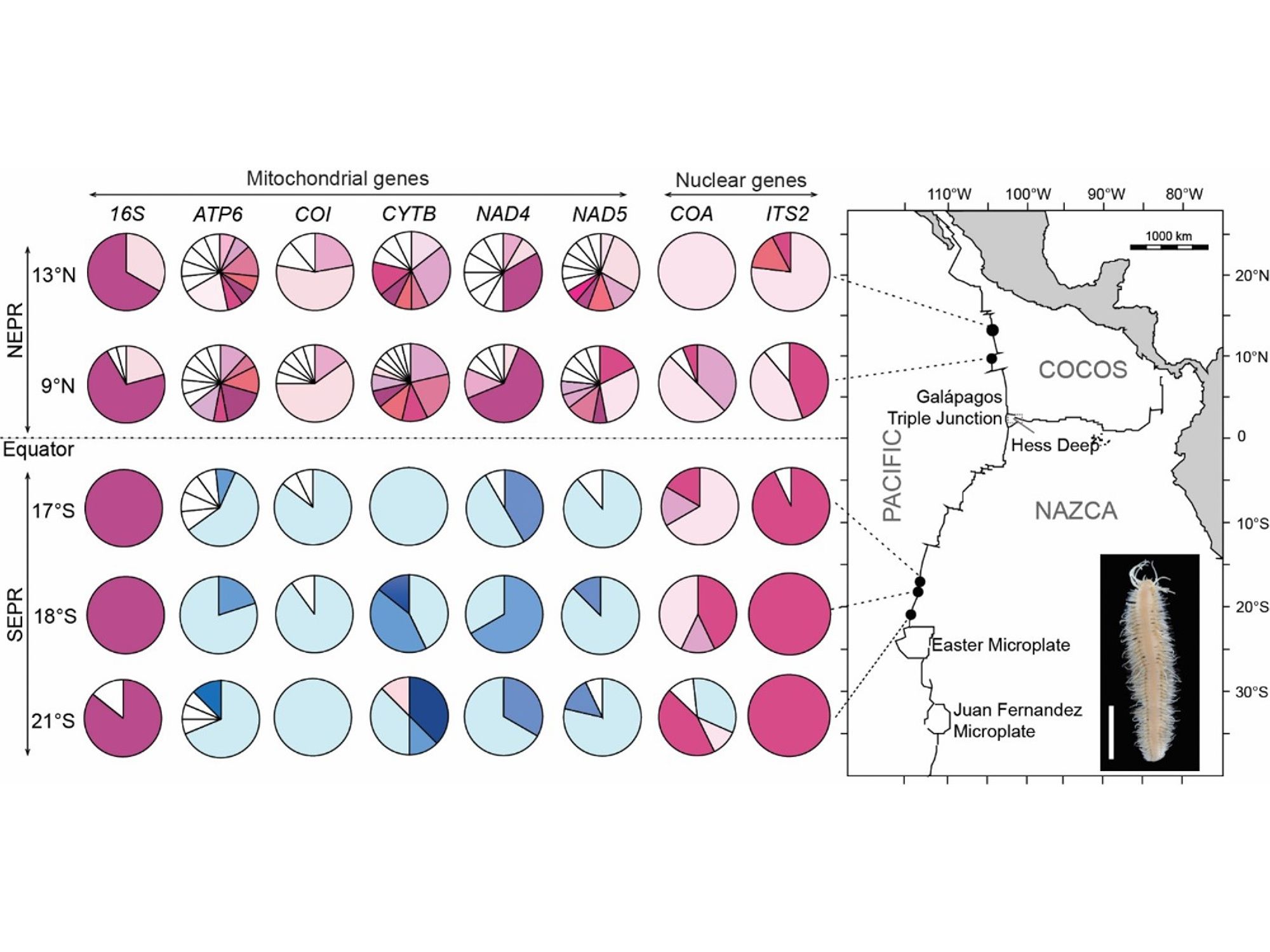

A chromosome-level assembly of the Japanese eel genome
Department of Biology
Authors: WANG Hongbo, WAN Hin Ting, WU Bin, JIAN Jianbo, NG Alice Ho Man, CHUNG Claire Yik Lok, CHOW Eugene Yui Ching, ZHANG Jizhou, WONG Anderson On Lam, LAI Keng Po, CHAN Ting Fung, ZHANG Eric Lu, WONG Chris Kong Chu*
*Corresponding author
Japanese eels (Anguilla japonica) serve as critical indicators of the healthiness of the coastal environment and resources for aquaculture. Using genome sequencing, Professor Chris Wong led a research that presented a high-quality genome assembly of the Japanese eel, and showed that large chromosomal rearrangements occurred during the third round of whole-genome duplications. Several chromosomal fusions and fissions reduced the number of ancestral pro-chromosomes in the Anguilla lineage from 25 to 19. A phylogenetic analysis of expanded gene families showed that olfactory receptors and voltage-gated calcium channels were greatly expanded. Both gene families play a part in olfaction and neurophysiology. Additional tandem and proximal duplications are made to obtain immune-related genes for adaptive advantages. Using genome assembly, the research discovered how Japanese eels evolved and identified adaptive and disease-resistant alleles for conservation.
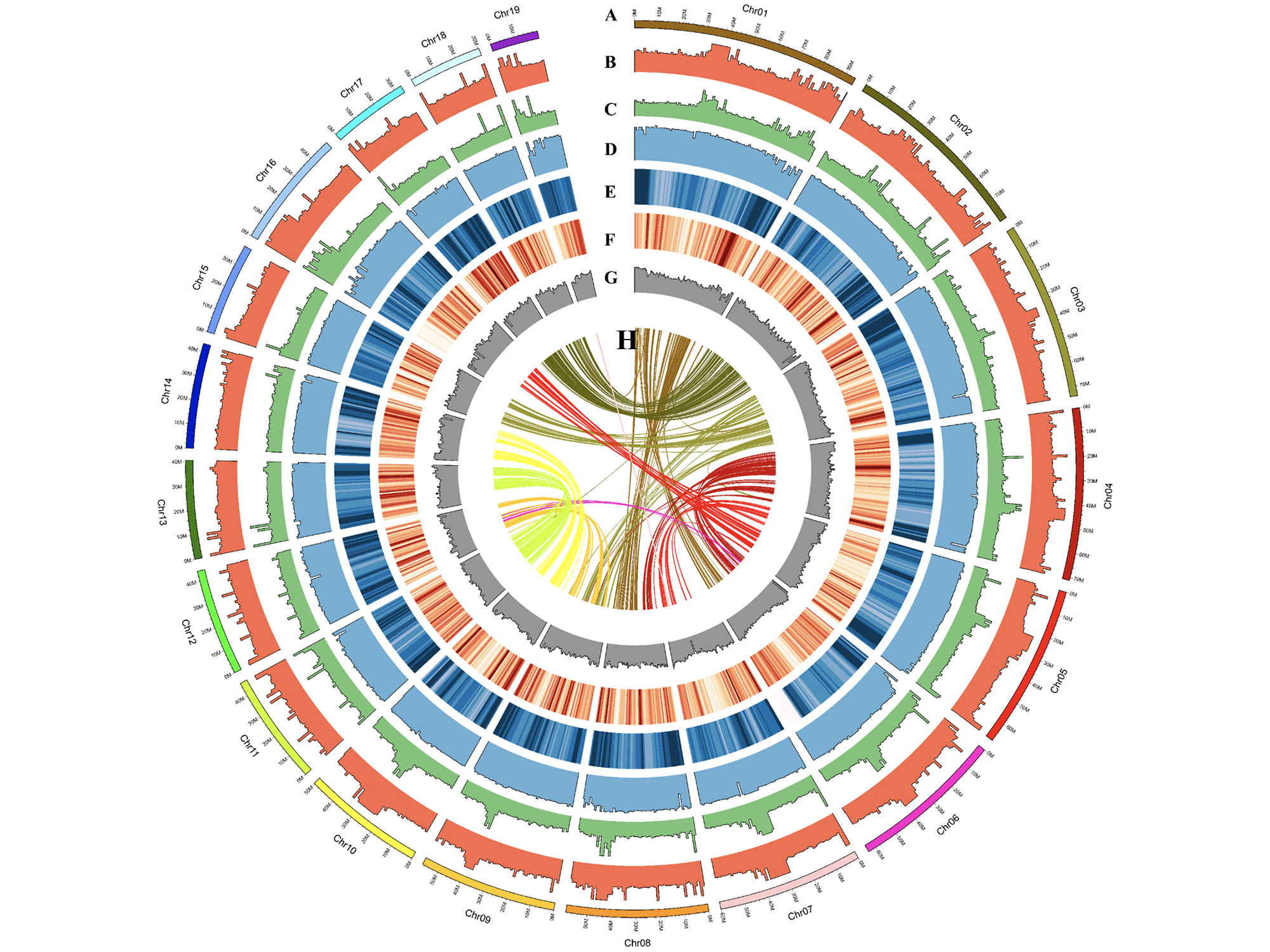

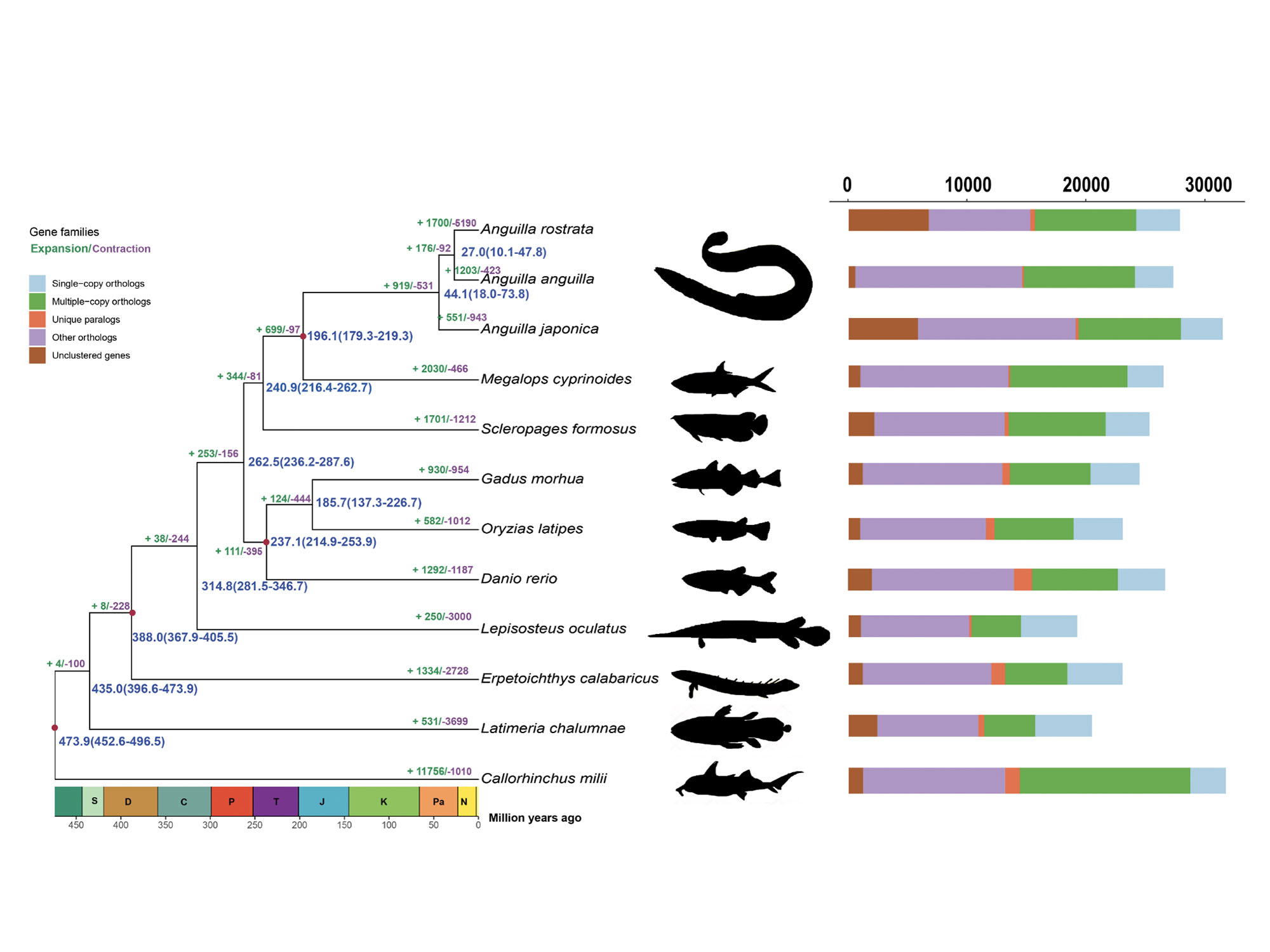

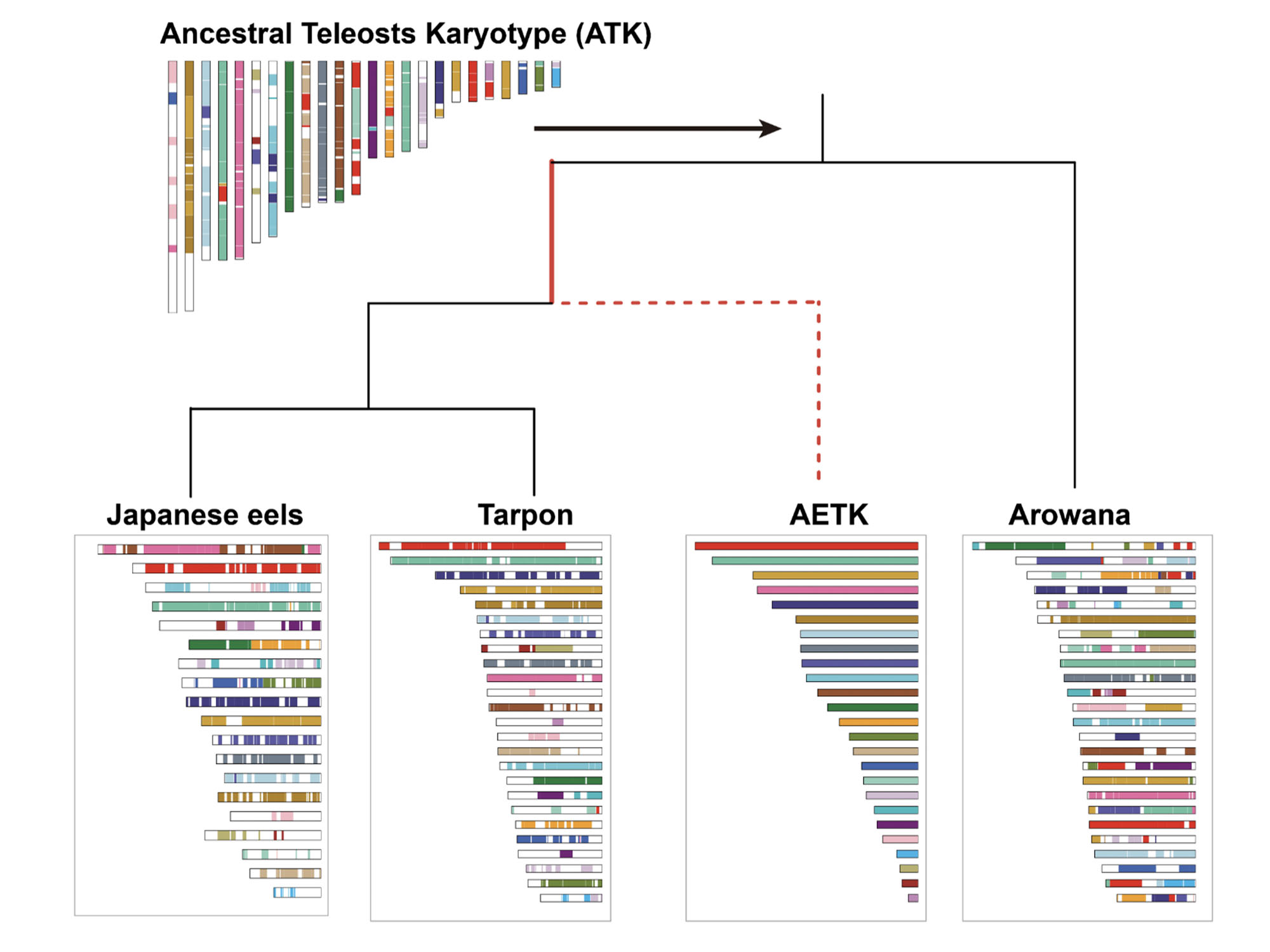

Preserving life under water
To prioritise the protection of marine ecosystems, the University has implemented sustainable practices in its food selection. As part of this commitment, the University strictly adheres to the latest WWF Hong Kong’s Seafood Guide and refrains from purchasing, selling, or serving any food items categorised as “Avoid” in on-campus catering outlets. This policy also extends to all on-campus and off-campus events and activities organised or managed by the University, ensuring that only sustainably produced seafood is consumed. By following these guidelines, the University actively contributes to the conservation of marine biodiversity and supports sustainable seafood practices.
